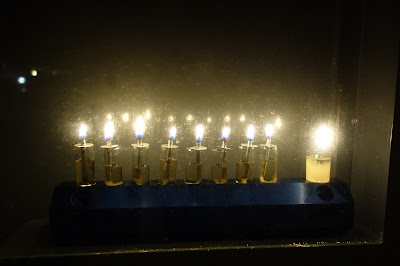Gedolei Yisroel to Gather Together at the Home of Rav Chaim Kanievsky This Zos Chanukah
It is a truly a sight to behold. Gedolim in Torah from all over Eretz Yisroel will gather in the holy home of MaRan Sar HaTorah Rav Chaim Kanievsky, to daven together as one. What cause could be so important that they will all choose to come together, you ask? For the yeshuos and parnassah of those who donate to Kupat Ha’Ir.
Donors to Kupat Ha’ir help to support impoverished & struggling talmidei chachamim and their families. These talmidim have gone to Rav Chaim Kanievsky pleading for help. That is why he has taken responsibility for these struggling individuals, and has promised something absolutely incredible to those who choose to take part in this partnership with him. This Zos Chanukah, a time known to be auspicious for parnassah, while he does the beautiful & powerful mitzvah of lighting the menorah, he will daven personally for those who give to help the impoverished families that he has taken under his wing. Yeshiva World News
Segulos of Zos Chanukah:
*The day is mesugal for one to daven for; barren women to have children, for a Refuah Sheleimah, and for one to be blessed with increased Parnassah.
*It is said in the name of the holy Rebbe, Rav Yisroel Rhiziner zechuso yagen aleinu that “what the tzaddikim of the generation accomplish through their lofty Neilah prayers on Yom Kippur, a simple Jew can ask and accomplish with his prayers on Zos Chanukah, the eighth day of Chanukah”.
*The Bnei Yisschar brings down that for barren women it is a special time during Channuka and especially Zos Chanuka (Hebrew Books. The Gemara in Shabbas(23B) itself brings down a segula of having children who are talmidim chachmim by lighting as Rashi brings down from Mishlei(6) ner mitzva v'Torah ohr, ner mitvah = Shabbas and Chanukah = Torah ohr.
From the Tehillim Hotline Mamash:
THE POWER OF PRAYER ON ‘ZOS CHANUKAH’
A Chassidic thought for all of us.
Today is the eighth and final day of Chanukah. This day is called “Zos Chanukah” because the Torah portioned read on this day is “Zos Chanukas Hamizbach…” which is taken from the Torah portion of Pinchas which discusses the sacrifices that each of the tribal princes offered on the day of the dedication of the Tabernacle in the wilderness. It is also taught that the final day of Chanukah is the “wrap up” of the entire eight day holiday and has special significance since it represents the essence of the entire holiday. As the festival of Chanukah is the Holiday of miracles, it is a particularly auspicious day for salvation and for our prayers to be answered.
It is said in the name of the holy Rebbe, Rav Yisroel Rhiziner zechuso yagen aleinu that “what the tzaddikim of the generation accomplish through their lofty Neilah prayers on Yom Kippur, a simple Jew can ask and accomplish with his prayers on Zos Chanukah, the eighth day of Chanukah”.
Therefore a Jew should set aside time on this day to beseech of Hashem to open his heart and mind to spirituality and strengthening his emunah, belief and not let this tremendous opportunity slip by.
The “Kedushas Mordechai” of Lelov allegorically explains today’s Torah portion which actually begins with the sacrificial offering of the prince of the tribe of Menasheh. The verse states: [Hebrew] “On the eighth day [of the dedication of the Tabernacle in the wilderness] the leader of the sons of Menashe, Gamliel the son of Pedahtzur [offered thus].”
We can consider each expression in the verse:
- “On the eighth day” is an allusion to the eight day of Chanukah.
- “the leader of”; the term in Hebrew is Nasi which can also be understood as “raised”; we can render it as “they are elevated”;
- Who? [Is elevated?]
- “the sons of Menashe”; alludes to the “forgotten children” (the term “menashe” in Hebrew can refer to something which is overlooked) who plead “father do not forget us”
- "Gamliel ben Pedahtzur" can be broken up into three Hebrew words consistent with its pronunciation;
- "Gam –Lee-El", “also me, G-d”;
- “ben”, “(I am) a child”;
- ‘Pedah tzur”, [Pedah in Hebrew means] redeemed by G-d [through His salvation]. (The term Tzur is used to refer to H-shem, as in [Hebrew]: “The Almighty`s works are flawless, for all His ways are just”)













